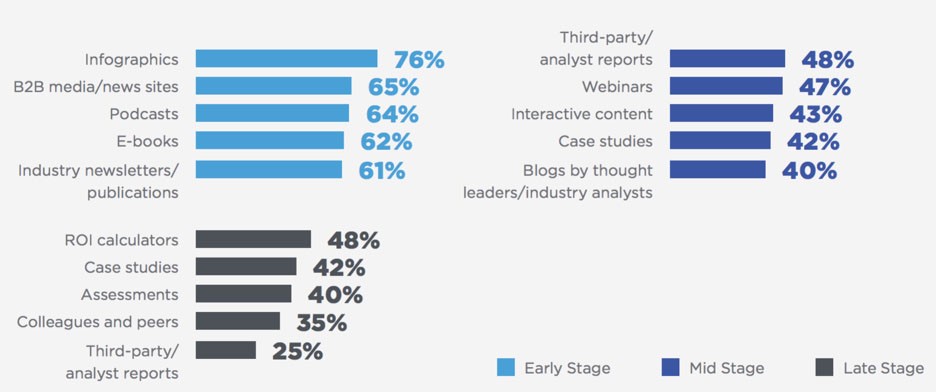How Content Can Close the Gap Between Sales and Marketing
Aligning sales and marketing efforts is critical. A case in point…
Every year, a bright young entrepreneur opens a lemonade stand in our neighborhood. Let’s call her Sally the salesperson. She has a bubbly personality and loves to talk up her special recipe. I don’t really like lemonade, but I always stop to buy some when I see her stand, because I like to support “local businesses.” Plus, she makes me smile.
Sally usually has a partner, whom we’ll call Mary the marketer. Mary is also bright and bubbly, but she prefers to stay behind the scenes, coloring very creative posters, which she places at both entrances to our subdivision. I love her drawings of lemons which all have smiley faces!
This year when I stopped for some sweet-tart refreshment and a fun chat, I noticed that Mary was not around.
“Where’s your partner,” I inquired lightly.
Sally’s usual smile disappeared as she admitted, “Oh, we had a fight.”
“Oh no. What was the fight about?”
“Well, I didn’t like her posters. When I told her that, she got mad and left.”
“What didn’t you like about her posters,” I asked, adding that I thought they were very creative.
After some hesitation, Sally said, “She drew pictures of cookies on the posters and we don’t sell cookies. Some people would ask me where the cookies were and then I had to tell them we didn’t have any. It made me feel bad.”
Ahh, a classic case of miscommunication between sales and marketing. It happens a lot.
According to Forbes, aligning sales and marketing is more important than generating a high volume of sales leads or closing a high percentage of leads. In fact, research by SiriusDecisions shows that optimized sales and marketing alignment can drive anywhere from five to 36% of a company’s growth. Conversely, the same research shows that companies with subpar alignment achieve subpar performance.
And yet, most companies indicate that they are not effectively aligning sales and marketing efforts.
Find Out What You Need From Each Other
Like the story of Sally and Mary, the problem is not usually complex: It comes down to a simple failure to communicate. At too many companies, these teams don’t work together or know exactly what the other is doing. Therefore, the first step is to find out what each team needs from the other to be successful.
Use content to begin this dialogue. Research by the Content Marketing Institute (CMI) and LinkedIn, found that content marketing can help sales and marketing work more closely and achieve goals more effectively than any other method. Here’s how:
Develop a Content Strategy Together
Your marketing team may be working hard to generate relevant, valuable content, but research shows that as much as 80% of this content goes unused by sales! The reasons for this include: marketing creating content without the input of sales; sales being unaware of content or how to access and use it; and a perception by sales that content doesn’t work.
First, create buy-in by forming a collaboration between sales and marketing from the beginning. As you develop a content strategy, the marketing team needs the following input from sales:
- Who are our potential buyers (detailed buyer personas)?
- How do they prefer to get information?
- What are our buyers’ primary pain points (i.e., what problems or needs do they have that you can help solve)?
- How can our content address these issues?
Using this input, develop content that the sales team will want to use, and buyers will engage with.
As you’re cultivating content ideas, keep in mind that different types of content are more effective at each stage in the buying process, from awareness, to consideration, to decision. A report from DemandGen shows the following preferences:

Make Content Easy to Find and Use
Keep content assets in an easy-to-access library, file or well-organized website. The easier it is to access, the higher the likelihood that it will be used. Make navigation a breeze by organizing your content by topic, buyer persona, buying stage or whatever works best with your sales efforts. Include a brief overview of the content to make selecting the right piece of content simple.
Whenever a new piece of content is created, be sure to notify your sales team by sending them a link, along with a brief recap. Help the sales team make good use of the content by offering suggestions on how and when to use a piece of content. Also, be sure to solicit ongoing feedback on what is working and what is not. Per the CMI/LinkedIn research, 81% of highly aligned marketers work with sales on how to use content (compared to 25% of those with low alignment).
Define Leads and Create A Process
Marketing automation (MA) can be a powerful tool is used effectively by everyone involved. For instance, it’s important to define the types of leads that are generated or what constitutes a lead. Determine these definitions before implementing a system, along with a clear process for how leads will be passed on and followed up with. Otherwise you run the risk of sales tracking down a high volume of unqualified leads or not following up on highly qualified leads.
As it relates to content, develop the MA strategy in tandem. When designing an automated drip program, both sales and marketing should be part of the process. Be sure to send the sales team a preview of emails or other communication that is going out to contacts.
Connect the Dots to ROI
If your sales team is not engaged in your content marketing strategy, you may have to demonstrate the value that content adds, particularly to Account-Based Marketing (ABM) efforts. A survey by SiriusDecisions found that salespeople noted that their average deal sizes are larger for ABM accounts than for non-ABM accounts. In other words, they understand the benefits of ABM.
Position your content marketing efforts as added value to your company’s ABM efforts, and you’ll be more likely to get your sales team on board. These days the average B2B buying committee has approximately seven people. Therefore, engaging both influencers and decision-makers throughout the process with content is more important than ever. Demonstrate how targeted content can improve and shorten the buying process by reaching the right person at the right time.
Aligning sales and marketing efforts can be challenging, but the results speak for themselves.
Happily, Sally and Mary are back to being friends and business partners. I suggested they have a meeting and talk things out. After much debate (and some baking assistance from Mary’s mom), they decided to add cookies to their product offerings. They felt this would attract a wider customer base and give them a competitive advantage over the lemonade stand around the block. I see a bright future for these young ladies.
For more on how to align sales and marketing, check out “Synchronized Sales and Marketing: The New Dream Team.”
